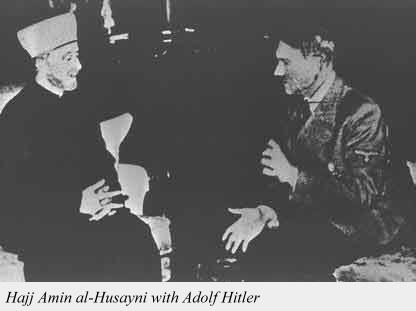Results 1 to 2 of 2
Thread: Islamization of Germany
Thread Information
Users Browsing this Thread
There are currently 1 users browsing this thread. (0 members and 1 guests)
-
11-25-2007, 11:27 AM #1

- Join Date
- Jan 1970
- Location
- Europe
- Posts
- 483
Islamization of Germany
Stefan Herre about the islamization of Germany

[quote]
First of all, how many Muslims live in Germany? We donât really know. The federal government says 3.1 to 3.4 million. This would mean about 4 percent of the total population. Similar estimates have been that until summer 2006 there were some 8 million people of immigrant background in Germany, of whom about 40% were Muslims. Yet the government admits that its figure is only an estimate, not based on verified statistics. Some observers, such as the Mideast expert Hans-Peter Raddatz, believe that the number is much higher.
A survey of the federal statistics authority in 2005, published June 2006, nearly doubled the 8 million number, to 15.3 million. The survey did not included religious affiliation. Thus the estimated absolute number of Muslims stayed the same. This implied halving the estimated percentage from 40 percent to 20 percent. This seems unrealistic, as immigration of Muslims never was lower than 40%, and their birthrate surely isnât lower than that of non-Muslim immigrants. Therefore, Raddatz uses the 40 percent to estimate an absolute number of about 6 million Muslims in Germany. Yet even this number, although based on logic, is also unverified. The only thing we definitely know about the number of Muslims in Germany is that we donât know it. Given the federal surveys lack of interest in the number of immigrant Muslims, analysis of the costs of Muslim immigration is very difficult.
How did this happen? In the 1950s the Federal Republic of Germany started to hire foreign workers, the so called Gastarbeiter or guest workers. First they came from Southern European countries such as Italy. From the early 1960s on this recruitment was expanded to Muslim countries, especially Turkey, and also to North African countries. Turkey faced a rapidly growing, poorly educated rural class, whom the Government there wanted to export. The majority of Turkish guest workers immigrated at a time when there was no more labour shortage in Germany. In fact, unemployment slowly increased.
Nevertheless, there is a growing myth circulating that Turks built up post-war Germany, but most Turks only came became Germanyâs economy was already booming. The myths even imply that Turks brought development and culture to our country; for example, water toilets. Perhaps there is some classical Islamic mythologizing here, involving disdain for pre-or non-Islamic cultures or their technological achievements, and even to deny their very existence.
As the result of a massive German family reunion program â frequently directed into the German welfare system â a large Turkish community was rapidly established. In contrast to immigrants from Europe, its members withdrew into insular, parallel societies, especially in the big cities.
Additionally, there were refugees from troubled areas. While Turks make up the large majority of Muslims in Germany, substantial groups include Palestinians, often from Lebanon, and Muslims from former Yugoslavia. In summer 2006, the Federal Government announced, that some 3.000 German citizens with a Lebanese background were to be evacuated from Lebanon. The German embassy in Beirut only knew about 1.000 German citizens. Finally we accepted 6.000 refugees from Lebanon. The Government didnât want to be too particular about passport controls for humanitarian reasons. How many of them were Hezbollah members, of course, is unknown. Once again, we find that official estimates about how many Muslims are in our country, to say nothing of important details, cannot be relied upon.
The problems caused by Muslim immigrants in Germany are the same as elsewhere. Perhaps at least in the beginning they might have been milder, as immigrants from Turkey had experience in a secular political system, compared to immigrants from more traditional Islamic countries. On the other hand kemalistic Turks cling to a very distinct nationalism, so that it is frequently difficult to separate nationalist Turkish demands from Islamic ones.
A few months ago the German parliament passed a new immigration law. It was not at all effective, but it least implied that people immigrating on behalf of family reunion laws â which mostly means young imported wives â have to be at least 18 years old and to know some 200 words of German. Not only Turkish and Islamic organizations in Germany protested and urged the Federal President, not to sign the law, but even Ankara tried to intervene.
In Germany there are currently 159 mosques, identifiable with cupola and minaret, 184 are being built. Additionally, there are some 2.600 less official-looking Muslim prayer houses. Many of them were or are being built by DITIB, a subsidiary organization of the Turkish government authority for religion, Diyanet. Diayenet also sends imams, who most often donât speak German and are replaced on a regular basis. Thus Islamization in Germany is not only a question of an ideology but consists increasingly of an intervention of a foreign State â Turkey â in national sovereignty. During the world soccer championship in 2006, Germanyâs biggest tabloid, BILD, published photos of young migrants waving a German flag with a Turkish white crescent in its red part. This was not criticized but praised as an example of successful integration. As in other countries, our media praises multiculturalism, whitewashes Islamist excesses, and demonizes critics of Islam as racists or at least blockheads.
Things used to be better. The first generation Muslim immigrants were more integrated than todayâs third generation. Today, many Muslim children donât speak any German when they start school. Immigrant youth often speak a strikingly rudimentary, grammatically simplified and generally incorrect German language, one that has even caught the attention of linguists. Poorly educated native German youths in Muslim quarters increasingly adopt this language maybe to avoid being seen as outsiders. Speaking such a language of course minimizes their chance for work.
Early in 2006 teachers of the Berlin Rütli school wrote a desperate open letter to the school authority, admitting that they had given up hope to cope with the increasing violence, especially by Arab youths, of whom even the slightly less violent Turkish youths are afraid, let alone German and other non-Islamic kids. They also complained that the migrants donât show any interest in studying or attending school at all, and that parents just donât care or even insult teachers. Especially female teachers were afraid of their students and didnât enter classroom without a cellphone, in order to be able to call for help. This caused some public debate for a while, yet proposals tended to blame society alone for the problem. The âsolutionâ
-
11-25-2007, 12:02 PM #2
The green-brown axis rears its ugly head.


 Reporting without fear or favor-American Rattlesnake
Reporting without fear or favor-American Rattlesnake


 LinkBack URL
LinkBack URL About LinkBacks
About LinkBacks




 Reply With Quote
Reply With Quote

Nicaragua Sees Nearly $1 Billion in Remittances from the U.S. in...
04-29-2024, 07:12 PM in illegal immigration News Stories & Reports